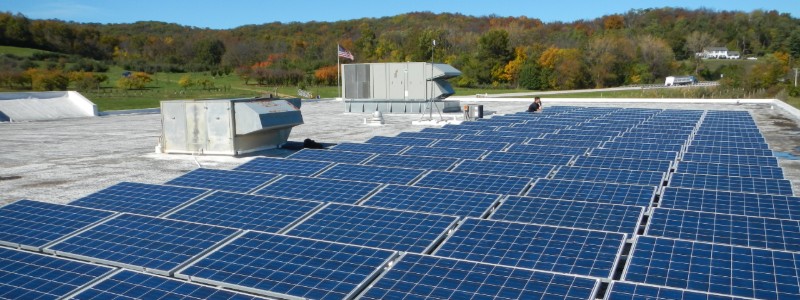Savings and Incentives – Why You Should Take Advantage of Solar Now
March 10, 2021

While solar policies and incentives vary across states and utilities, there has been one critical piece of federal policy that has played an outsized role in the rapid expansion of the solar energy industry. Much like other incentives that have long since sunset, this policy too is phasing down.
Facility managers around the U.S are running out of time to maximize the financial benefit that is the solar Investment Tax Credit (ITC). Many are not aware of how this tax credit policy works to their advantage. Given that this tax mechanism is largely responsible for the 10,000% growth of the solar marketplace since its inception, it’s certainly worth a closer look so you can understand how to leverage its unique benefits.
The ITC is a federal policy that provides businesses across the U.S a one-time 26% tax credit for installing solar, which comes off the topline project costs. This tax credit is a dollar-for-dollar reduction in the amount that a company would otherwise have to pay the government in corporate taxes. The ITC combined with 100% bonus accelerated depreciation translates into nearly half of the project’s costs eligible to be recouped via tax benefits. If you manage a facility that is exempted from paying taxes, keep reading because we address how the ITC can benefit you later in the blog.
Don’t Repeat History
The catch here is that the longer you take to decide on whether you want to go solar or not, there is a chance that you will lose out on maximizing your benefit from the 26% ITC. At the peak of the ITC, companies that went solar could get a 30% tax credit off their installation costs. However, the incentive level has decreased over the years just as the cost of solar panels are rapidly decreasing due to natural market forces and increased improvements in solar technology. Therefore, the government reduces the ITC as installing solar is becoming increasingly affordable, even without the incentive.
Congress recently announced that the ITC, which was scheduled to drop to 22% in 2021, would remain at 26% until the end of 2022. However, following that, the government plans to decrease the ITC level according to the following schedule:
- 26% for solar projects in 2021 and 2022
- 22% for solar projects in 2023
- A permanent 10% credit for solar projects in or after 2024
This means that if your company wants to maximize the benefit of the ITC, it is in your best interest to begin construction of your solar system as soon as possible (or, at minimum, secure a construction contract). Don’t repeat history and miss out on an incentive that is of huge advantage to you, your facility, and company.
Incentives Still Relevant for Non-System Owners and Tax-Exempt Entities
Your company must choose to directly purchase and be the sole owner of the solar energy system in order to take advantage of the ITC. However, the reality is that some organizations have a limited budget or might not have taxable income (i.e., nonprofits, schools, or government entities). Therefore, they choose to enter into a Power Purchase Agreement (PPA) or a third-party solar lease to minimize or eliminate the initial investment required to install solar arrays. These models can also be attractive for businesses with tax appetite as it helps preserve capital for their core competencies.
With a PPA, a solar developer will pay all the upfront costs of installing and maintaining the solar array in exchange for a long-term agreement where you pay the developer a predetermined rate for the energy produced by the system. In an operating lease model, businesses pay a monthly lease payment to use the solar equipment from a developer. In both cases, even if the panels are on the roof of your facility, the solar developer is the legal owner of the system.
If you choose to go the third-party ownership route, you will still benefit from lower electricity expenses for your property. However, your company will not receive the tax credits as they will be passed down to the solar developer. So, deciding whether you want to own a system, thereby taking advantage of the ITC, or using a PPA or a solar lease is entirely up to you – there is no right or wrong. However, it is still important to take action sooner rather than later due to declining incentives. The PPA rate a solar developer can offer you will only increase if they cannot take advantage of the most lucrative, current incentive levels.
Start Planning for Solar TODAY
Be it declining incentives or the continued and ever-ballooning cost of your electric bill, now is the time to start exploring your solar energy options. Solar developers like Pivot Energy can help you design, construct, and make sure that you can take full advantage of the ITC and other incentives available to you. However, there can always be unanticipated delays, like getting permits, that are beyond your or the solar developer’s control. These things can further push back the timeline and increase your company’s risk of losing out on the full ITC benefit.
Pivot Energy provides free consultations for facility managers that want to get a preliminary understanding of the costs, incentives, and benefits of going solar. To schedule a chat, fill out the contact form on our website today.





